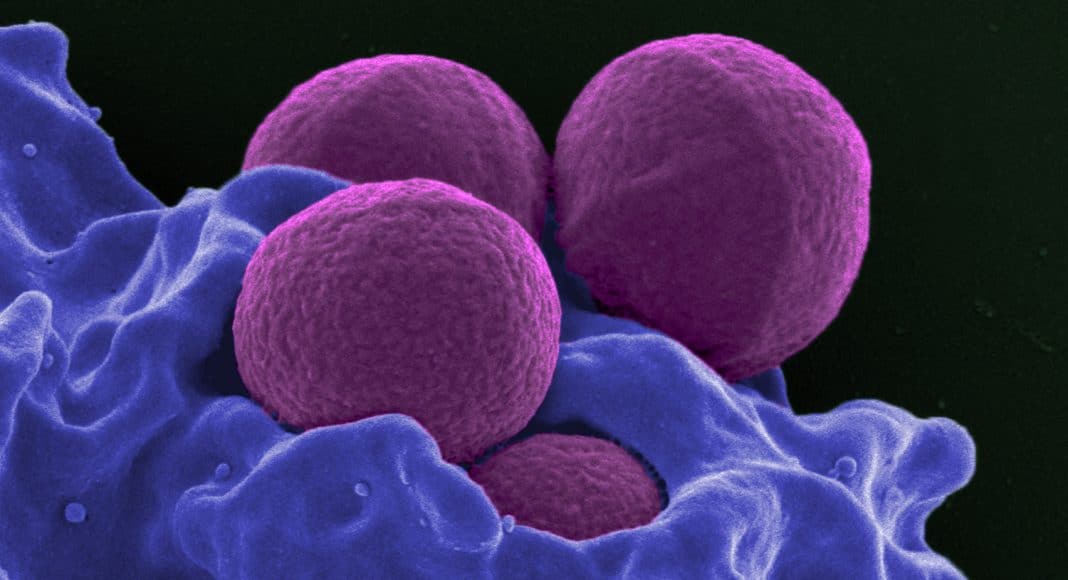In the 1990s, we had the Super Predator—the ice-blooded, crack-addled, and mostly imaginary child gangbanger who murdered for sport. (Sorry, Hillary, but that was not your finest moment, or haircut.)
Now, in the first decades of the third millennium we have the Super Bug, antibiotic-resistant germs making the world unsafe for us all.
Unlike the super predator, the super bug is not an urban legend, but altogether too real: Each year antibiotic-resistant bacteria sicken some two million of us, kill another 23,000, and inspire countless medical scare-pieces—just like this one!
One of the more common superbugs is MRSA—short for methicillin-resistant Staphylococcus aureus, which delivers a supercharged version of the humble staph infection. Staph is all over the place. Right now, one in three of us has it up their nose. Under normal circumstances, it doesn’t do much harm, but if your immune system is compromised—say you are very young, or very old, or recovering from surgery—these minor infections can have life-threatening complications. And there’s nothing we can do to stop them.
Antibiotic overprescription is one culprit in the rise of the super bug. Another is the fact that we’re simply not developing any new antibiotics. In fact, over the past 40 years, only one new class of these drugs has been introduced.
Bet you’ll never guess what, though: Cannabis just might provide an answer!
Researchers in Italy and the UK tested the five most common cannabinoids in Cannabis savita—THC, CBD, and three more exotic compounds: cannabinol, cannabigerol, and cannabichromene (which, incidentally, are also the names of Cinderella’s three ugly stepsisters). All five showed “potent antibacterial activity,” even against the supercharged, multidrug-resistant form of staphylococcus sometimes known by the initials MRSA. Lead researchers Giovanni Appendino and Simon Gibbons concluded that these cannabinoids “compare highly favorably with the standard antibiotics.” Even if they do say so themselves.
The team doesn’t know whether these cannabinoid could make a viable injectable antibiotic; that would entail extensive testing. However, a topical application “to reduce skin colonization by MRSA” might be a shorter-term possibility.
You can read an interview with Drs. Appendino and Simon at MIT Technology Review.


